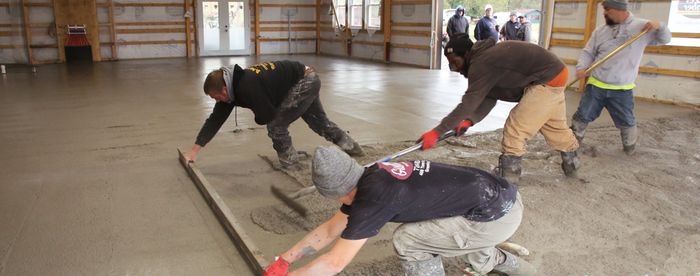Bending Rebar with Pipes
If you only have a few pieces to bend, skip the pricey rebar-bender and use some tools you probably already have lying around the job site.

If you need to bend a couple pieces of rebar for a small concrete pour, you could go rent an expensive rebar bender, but if you want to save a few extra bucks, there’s a better way.
Jim Blodgett of Roy, Washington, figured out that he could bend rebar pretty easily with a pair of steel pipes. If you’re like me, and have a couple of pipe clamps around, those will work just fine. All you have to do is lay the first piece of pipe on the ground, slide the rebar into the pipe up to the mark where you want the bend to be, take the second pipe and slide it over the rebar, double check that you’re still on your mark, then step on the first pipe while you pick up the second one. The results will be a pretty tight bend.





View Comments
This is certainly an easy way to bend smaller bars.
HOWEVER, keep in mind 2 things - 1) There is a minimum radius recommended by CRSI for cold rebar bends - typically 3 times the bar diameter, and 2) Cold rebending of rebar is prohibited. Tighter bends run the risk of causing fractures in the bar.
Please followup on the statement above; "Cold rebending of rebar is prohibited" I have been building and forming for over 40 years and have never seen or been around anyone or any job site where rebar was not cold bent.
The statement is cold RE-bending. Once, at the proper radius, is fine. If you make a mistake, don't re-bend- throw it away. Wasted rebar is cheaper than failed rebar.
The ACI-318, requires 6 bar diameters, on #3 through 8 bars. You can bend bars as shown in the video: If you have the pipe end flared, so they don't nick the bar, and if you offset the ends of the pipe to allow the bar to bend to the required diameter. With them close together, you will damage the bar, and it won't be able to develop the full tensile strength of the bar before it fails at the bend. Since bent bars are typically called out for places where you need to transfer that loading, such as footing to retaining wall joints, you could cause a catastrophic failure.
I have never seen hot bent bars, as this ruins the heat treating. Bars are always bent cold, unless you are going to re heat treat them, and retest them. I guess if you wanted to make a really tight bend you would have to do it hot, and then heat treat the steel afterward to avoid crystallization. But there are probably better solutions.
It is not hard to find references online to the need to respect minimum bend radius. And you'll see that commercial benders have different sized dies to bend the various diameter bars. When working in housing I think this is routinely overlooked however. I've used pipe from my pipe clamps to bend rebar in the past and ruined the tread so that the clamp fittings no longer fit.
user-286557 - Please note that I said "REBENDING", i.e. straightening a previously bent bar. Obviously all bars get 'tweaked' slightly sometimes on the job, but substantial straightening and/or rebending is what is prohibited.
Best to use the unthreaded end of your pipe clamp bar because a few of those bends and the pipe will start to flare. Then your clamp won't thread back on. I've got a set of pipes that I use for bending rebar and they eventually flare out like a trumpet. Then you have to cut them off and start over with a fresh end.
Also, leave more space between the two pipes and you will get a bigger radius in your bend. That will keep the rebar strong.